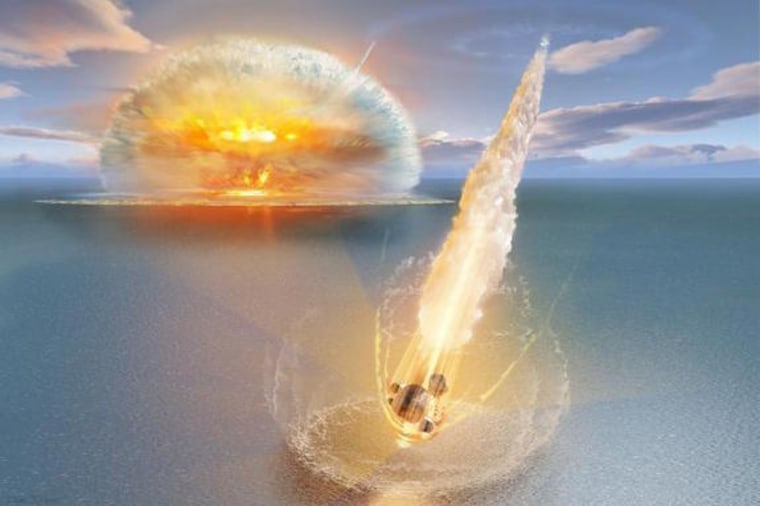It's not altogether uncommon to hear about double rainbows, but what about a double meteor strike? It's a rare event, but researchers in Sweden recently found evidence that two meteors smacked into Earth at the same time, about 458 million years ago.
Researchers from the University of Gothenburg uncovered two craters in the county of Jämtland in central Sweden. The meteors that formed the craters landed just a few miles from each other at the same moment, according to Erik Sturkell, a professor of geophysics at the University of Gothenburg and one of the scientists who is studying the newfound craters.

When the meteors slammed into Earth, Jämtland was just a seafloor, about 1,600 feet (500 meters) below the surface of the water. One of the craters left by the meteors is huge, measuring 4.7 miles (7.5 kilometers) across. The other, smaller crater — which is only about 2,300 feet (700 m) across — is located just 10 miles (16 km) from its larger neighbor. [Meteor Crater: Experience an Ancient Impact]
After analyzing information collected from a drilling operation, the researchers determined that the impact craters were formed at the same time. The information revealed identical geological sequences, or layers of rock, inside each crater. The sediment that accumulated inside the craters over the subsequent millennia also dates back to the same time, according to Sturkell.
Related: Would Elon Musk's Plan to Nuke Mars Actually Work?
"In other words, these are simultaneous impacts," Sturkell said in a statement. The meteors likely crashed to Earth following the collision of two large asteroids in the asteroid belt between Mars and Jupiter some 470 million years ago, he added.
When the meteors crashed into Earth, they displaced the water underneath them, leaving two huge, dry pits in the seabed for about 100 seconds, the researchers said.
Related: Asteroid to Strike Near Puerto Rico? Not True, Says NASA
"The water then rushed back in, bringing with it fragments from the meteorites mixed with material that had been ejected during the explosion and with the gigantic wave that tore away parts of the seabed," Sturkell said.
This is a condensed version of a report from Live Science. Read the full report. Follow Elizabeth Palermo @techEpalermo. Follow Live Science @livescience, Facebook & Google+.
More from Live Science:
- Space-y Tales: The 5 Strangest Meteorites
- Crash! The 10 Biggest Impact Craters on Earth
- Photos: New Kind of Meteorite Found in Sweden
Copyright 2015 LiveScience, a Purch company. All rights reserved. This material may not be published, broadcast, rewritten or redistributed.